Winter Vegetables
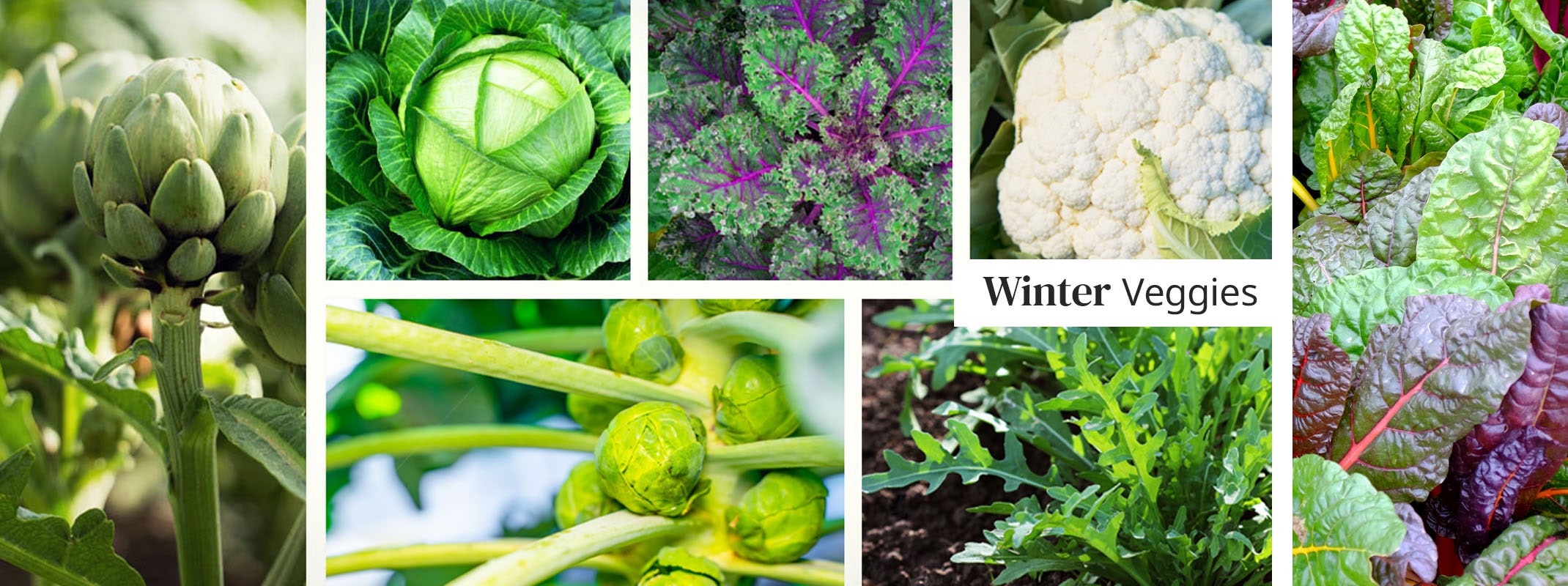 Not only is fall a great time to plant new perennials and trees, it is the best time to plant those tasty and incredibly healthy winter veggies such as broccoli, cauliflower, kale, and the list is a lengthy one. Check out the many varieties available now at SummerWinds for your winter garden.
Not only is fall a great time to plant new perennials and trees, it is the best time to plant those tasty and incredibly healthy winter veggies such as broccoli, cauliflower, kale, and the list is a lengthy one. Check out the many varieties available now at SummerWinds for your winter garden.
Traditional Favorites
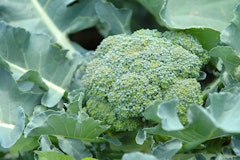
Broccoli
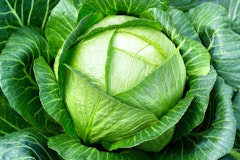
Cabbage
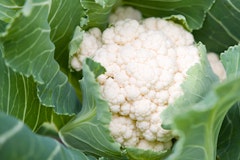
Cauliflower

Brussels Sprouts
- Spacing: Broccoli, Cabbage and Cauliflower plants about 18 inches apart; Brussels Sprouts – plant them about 2 to 3 feet apart.
- Light: Full sun
- Soil: Use well-draining, fertile soil
- Watering: Keep the soil evenly moist.
- Fertilization: Fertilize with a balanced organic fertilizer or compost.
- Pest Control: Watch out for cabbage worms and aphids, and slugs on Cauliflower & Cabbage
Dark Leafy Greens
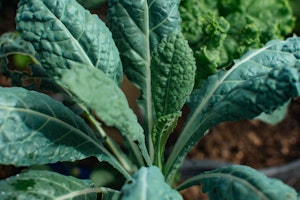 Dinosaur Kale
Dinosaur Kale
- Appearance: Dinosaur kale has dark green, long, narrow, and wrinkled leaves. The leaves have a distinctive pebbled texture, which is why it's sometimes called "dinosaur" or "lacinato" kale.
- Flavor: It has a slightly sweeter and more delicate flavor compared to traditional curly kale.
- Usage: Dinosaur kale is often used in salads, soups, and sautés. It's also popular for making kale chips due to its appealing texture.
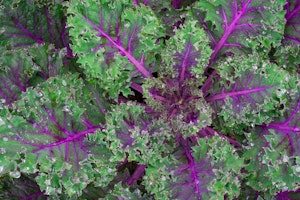 Russian Kale
Russian Kale
- Appearance: Russian kale has flat, fringed leaves that are green with purple-red veins. The leaves are often smoother and less curly than other kale varieties.
- Flavor: It has a milder, slightly sweet flavor compared to some other kale varieties.
- Usage: Russian kale is versatile and can be used in salads, smoothies, soups, and sautés. It's known for its tenderness.
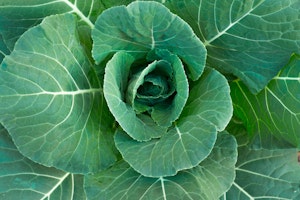 Collard Greens
Collard Greens
- Appearance: Collard greens have large, dark green, and somewhat coarse leaves with a mild curve along the center vein.
- Flavor: Collard greens have a mildly bitter taste and a hearty texture.
- Usage: Commonly used in Southern cuisine, collard greens are often simmered or braised with flavorful seasonings and sometimes served with smoked or salted meats.
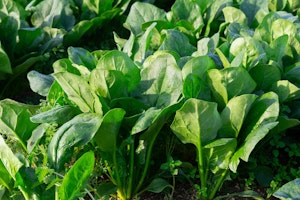 Spinach
Spinach
- Appearance: Spinach has small, tender, bright green leaves that are typically round or oval in shape.
- Flavor: Spinach has a mild, slightly sweet, and earthy flavor.
- Usage: Spinach is incredibly versatile and can be eaten raw in salads, added to sandwiches, used in smoothies, or cooked in a variety of dishes, including quiches, pasta, and stir-fries.
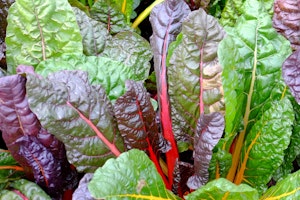 Swiss Chard
Swiss Chard
- Appearance: Swiss chard features large, dark green leaves with colorful, edible stems (often red, yellow, or white).
- Flavor: Swiss chard has a slightly earthy and mildly sweet flavor, and the stems have a crisp texture.
- Usage: Swiss chard is commonly used in sautés, stir-fries, and as a side dish. Both the leaves and stems are edible and can be prepared separately or together.
Regular Leafy Greens
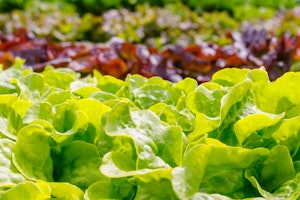 Lettuce
Lettuce
- Appearance: Lettuce typically has light green to pale green leaves that can be smooth, curly, or frilly, depending on the variety. Iceberg lettuce, for example, has compact, round heads, while Romaine lettuce has elongated leaves.
- Flavor: The flavor of lettuce is mild and slightly sweet, with variations in taste between different types. Iceberg lettuce is known for its crisp and refreshing taste, while Romaine lettuce has a slightly more robust flavor. Leaf lettuces, such as green leaf or red leaf, have a tender, delicate taste.
- Usage: Lettuce is a popular salad green and is often used in sandwiches, wraps, and as a bed for various toppings. It's a staple in salads and offers a refreshing and crunchy texture.
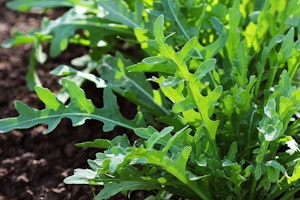 Arugula
Arugula
- Appearance: Arugula, also known as rocket, has dark green, lobed leaves with a distinctive peppery aroma.
- Flavor: Arugula has a peppery, slightly spicy, and nutty flavor that sets it apart from milder salad greens. The taste can range from mildly peppery to quite bold, depending on the maturity of the leaves.
- Usage: Arugula is often used to add a peppery kick to salads, and it pairs well with a variety of ingredients like Parmesan cheese, nuts, and citrus fruits. It can also be added to sandwiches or used as a pizza topping. Arugula is prized for its bold and distinctive flavor.
Peas and Artichokes
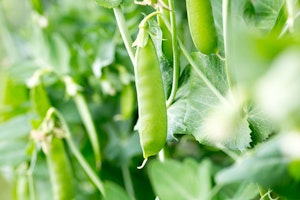 Edible Peas
Edible Peas
- Appearance: Edible peas come in various forms. Snow peas have flat, tender, and edible pods with small peas inside. Snap peas have crisp, edible pods, and the peas inside are also edible. Shelling peas have inedible pods, and only the peas inside are consumed.
- Flavor: Edible peas have a fresh, sweet, and slightly grassy flavor. Snow peas are especially tender and sweet, while shelling peas offer plump, sweet peas with a slightly starchy texture.
- Usage: These peas can be enjoyed in a variety of ways. Snow peas and snap peas are often used in stir-fries, salads, or served as a side dish. Shelling peas are typically cooked or blanched and can be used in soups, pasta dishes, or simply enjoyed on their own.
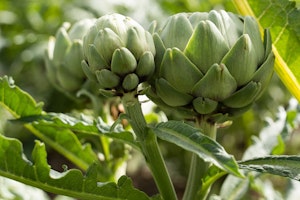 Artichokes
Artichokes
- Appearance: Artichokes are large, green, thistle-like vegetables with tough, spiky leaves. The edible part is the "heart," which is the tender, meaty portion at the base of the leaves.
- Flavor: Artichokes have a mild, nutty, and slightly earthy flavor. The leaves and heart can be enhanced with dips and sauces.
- Usage: Artichokes are often steamed or boiled, and the leaves are plucked and dipped into a sauce, such as garlic butter or aioli. The heart is a prized delicacy, often found in salads, dips, or as a topping for pizza and pasta dishes. It's a gourmet vegetable known for its unique taste and texture.
Seeds
- Beets
- Carrots
- Fava Beans
- Radishes
- Turnips
- Rutabaga
- Parsnips
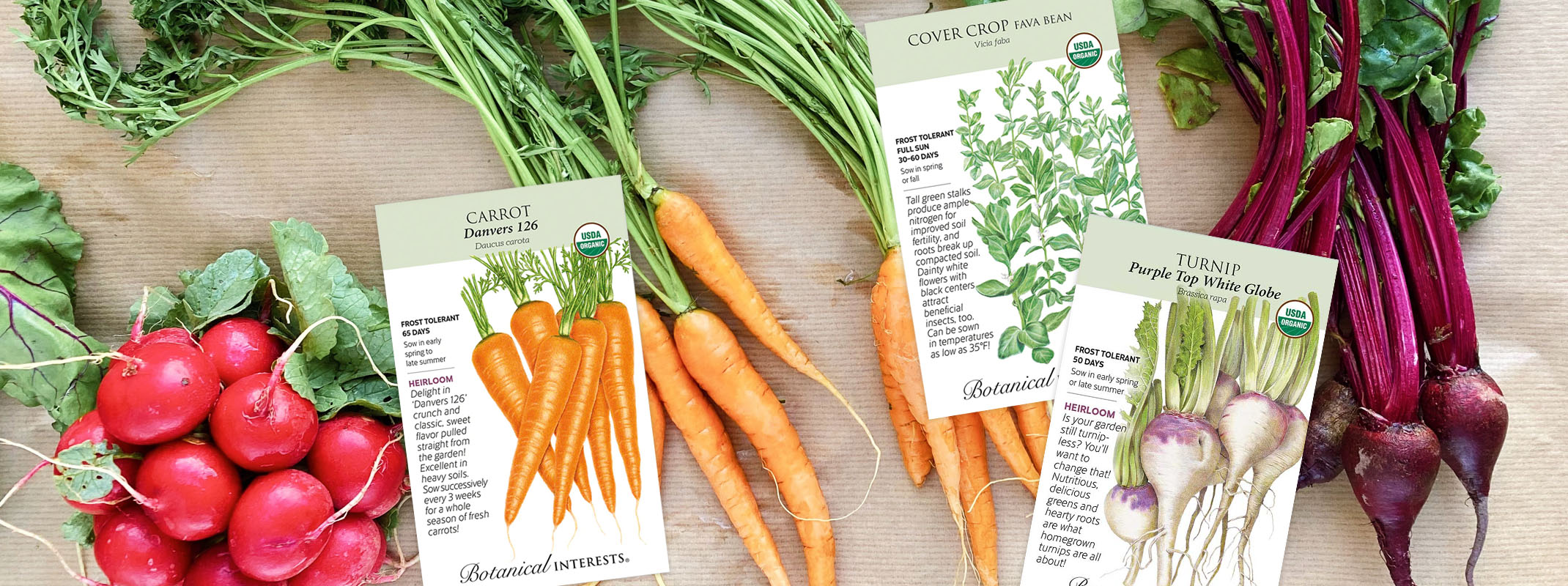
Planting different types of seeds like beets, carrots, fava beans, radishes, turnips, rutabagas, and parsnips follows similar steps, but there may be slight variations in spacing and care. Here's how to plant each of these seeds:
1. Beets
- Planting Depth: Plant beet seeds about 1/2 inch deep in rows 12-18 inches apart.
- Thin Seedlings: Once the seedlings are a few inches tall, thin them to about 3-4 inches apart.
2. Carrots
- Planting Depth: Sow carrot seeds about 1/4 inch deep in rows 12-18 inches apart.
- Thin Seedlings: Thin to 2-3 inches apart once the seedlings are a few inches tall.
3. Fava Beans
- Planting Depth: Sow fava bean seeds about 1 inch deep, spaced 6-8 inches apart in rows 18-24 inches apart.
- Support: Fava beans grow tall and may need support as they mature.
4. Radishes
- Planting Depth: Sow radish seeds about 1/4 inch deep in rows 6-12 inches apart.
- Thin Seedlings: Thin to 1-2 inches apart when the seedlings are a few inches tall.
5. Turnips
- Planting Depth: Plant turnip seeds about 1/2 inch deep in rows 12-18 inches apart.
- Thin Seedlings: Thin to 3-4 inches apart when the seedlings are a few inches tall.
6. Rutabagas
- Planting Depth: Sow rutabaga seeds about 1/2 inch deep in rows 18-24 inches apart.
- Thin Seedlings: Thin to 6-8 inches apart when the seedlings are a few inches tall.
7. Parsnips
- Planting Depth: Sow parsnip seeds about 1/2 inch deep in rows 12-18 inches apart.
- Thin Seedlings: Thin to 3-4 inches apart when the seedlings are a few inches tall.
Care:
- Water: Keep the soil consistently moist but not waterlogged. Watering early in the day helps prevent fungal diseases.
- Fertilize: Incorporate organic matter into the soil before planting, and apply all-purpose fertilizer if needed
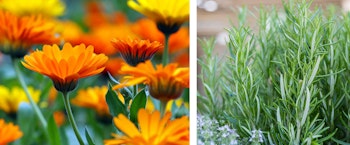
Companion Plants for Your Winter Veggies
Calendula and rosemary are beneficial companions for winter vegetables. They repel pests, enhance growth, attract beneficial insects, and provide aesthetics, medicinal, and culinary uses. Calendula's deep roots improve soil, fostering biodiversity for a healthier winter garden.

